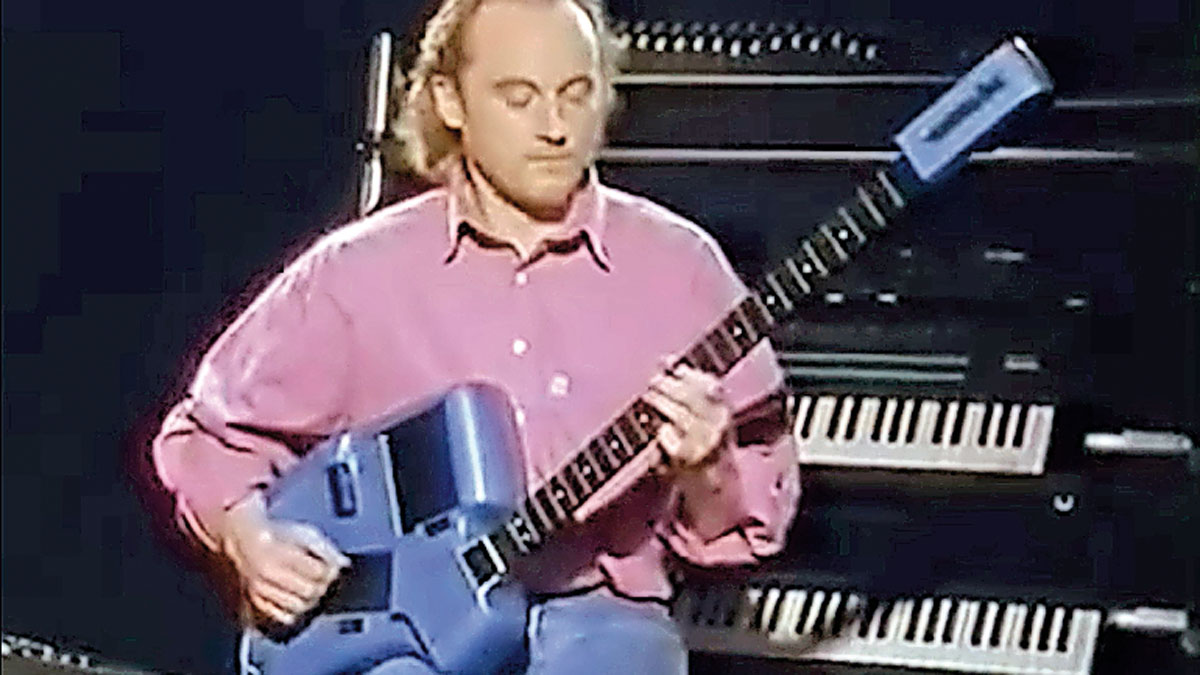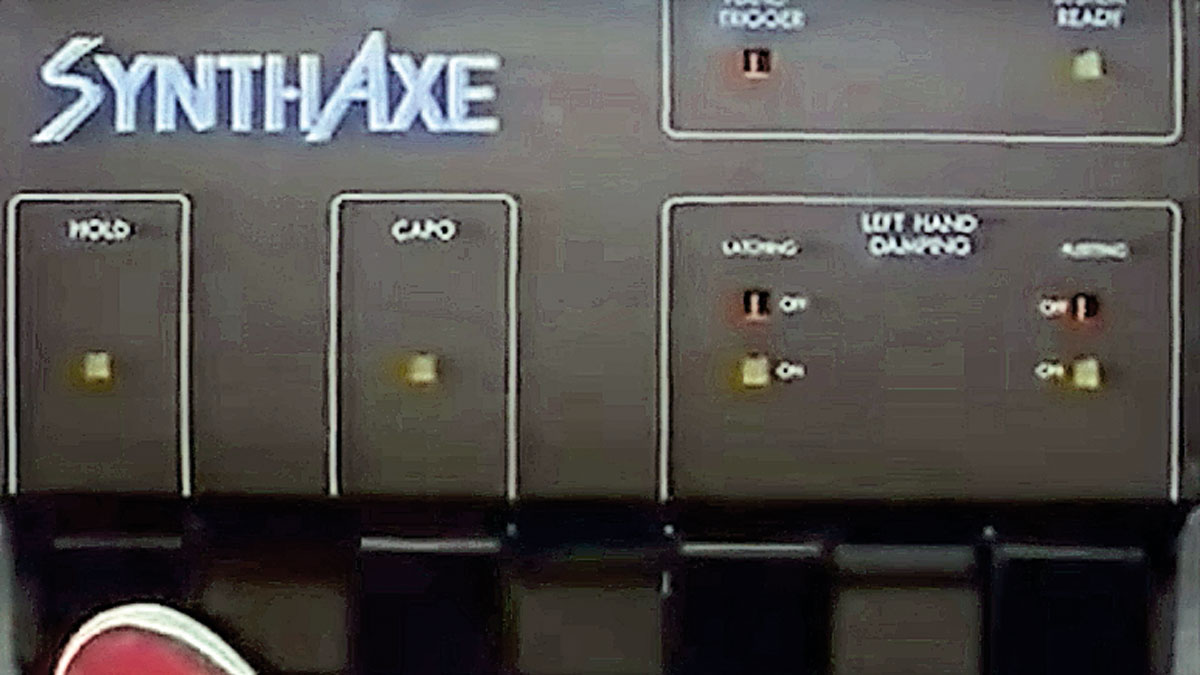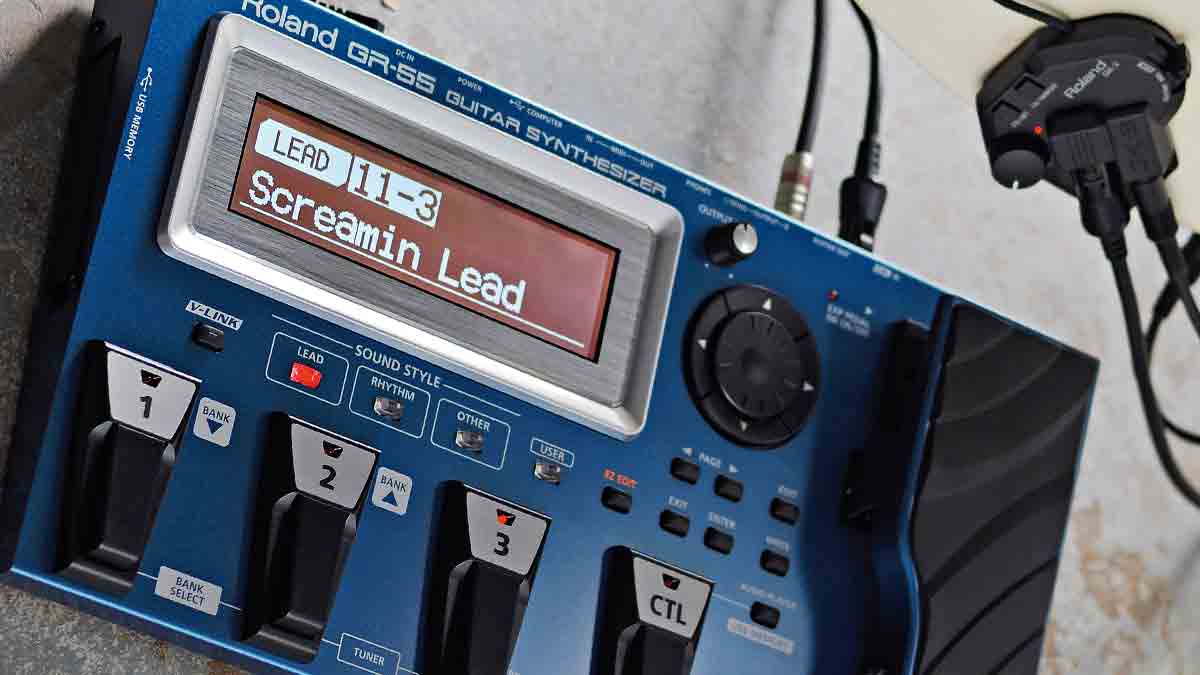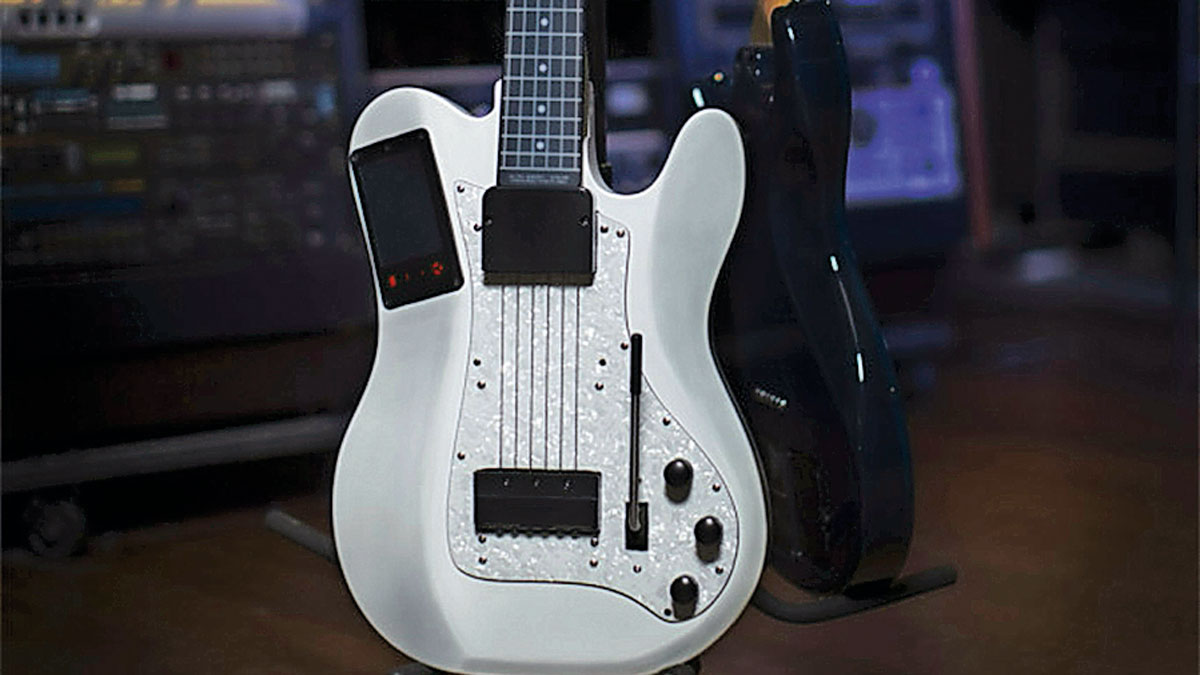
Introduction
Many have tried to make the guitar synth cool. Most have failed. Let’s take a quick journey through the evolution of the instrument…
The fact that Boss' new SY-300 can be played from any guitar actually harks back - long before the hexaphonic pickup made its debut - to the very first processor that was marketed as a ‘guitar synth’: the EMS Synthi Hi-Fli, a large tablet-like structure on a stand as used by David Gilmour.
The big step in guitar-synth evolution was pitch-tovoltage conversion technology
This, though, may just be thought of as an analogue multi-effects processor that simply processed the sound of the guitar’s output as it combined ring modulation and other effects. Other companies, such as Maestro with the USS-1 Universal Synthesizer, produced similar products.
The big step in guitar-synth evolution was pitch-tovoltage conversion technology, manifesting itself in 1977 in Roland’s first foray into guitar synths, the GR-500, as heard on David Bowie’s Ashes To Ashes.
This consisted of a guitar (GS-500) equipped with a hexaphonic (or divided) pickup that senses the sound of each string separately, connected by a multicore cable to a desktop synth unit.
Don't Miss

GR-eat steps forward
Around the same time there was also the ARP Avatar, reportedly used by Jimmy Page and Pete Townshend, and driven by a proprietary pickup. Both GR-500 and Avatar were capable of monophonic synth sounds but could do polyphonic fuzz. The only polyphonic guitar synth at this point was an expensive beast made by 360 Systems.
Roland made the next step into something that more resembles a modern guitar synth when someone had the idea to put the synth part of the equation on the floor. Released in 1979 and used by Andy Summers, among others, the combination still featured a dedicated guitar, chosen from four available models, but it now connected via multicore to the smart blue GR-300 floor unit (not unlike the SY-300).
They were still limited in their range of sounds, but in the 1980s, the invention of MIDI really opened things up
There was also a simpler yellow GR-100. A few pedals played directly from guitar and marketed as guitar synths, such as the Korg X911 and the EHX Micro Synth, were also available in the late-70s/early 80s.
While guitar synths were getting used and heard - Robert Fripp’s and Adrian Belew’s GR-300s are all over King Crimson’s Discipline album - they were still limited in their range of sounds, but in the 1980s, the invention of MIDI really opened things up.
MIDI (an acronym for Musical Instrument Digital Interface) is a system that allows communication between a variety of musical instruments, computers and related devices.
MIDI carries event messages that specify such things as the pitch and velocity of notes allowing one MIDI-equipped instrument to send a message that plays the same note on another connected instrument. Modern guitar synthesis relies on pitch-to-MIDI conversion.

Roll on Roland
In 1985, Roland introduced the GR-700. Okay, it was still a guitar (GR-707) and synth combination connected via a cable, but had rudimentary MIDI, so you weren’t just limited to the sounds in the GR-700, but could link to and play other MIDI-equipped synths.
The next step was for guitarists to be able to use their own guitars for synth control when Roland brought out the GK-1 pickup, which could attach to any guitar. This could connect to the GR synths, but also to the GM-70 guitar-to-MIDI converter.
Roland’s GR-1 synth and associated GK-2 pickup put the sounds in one box with onboard effects.
Other manufacturers had alternative pitch-to-MIDI products - one option was the Shadow SH-075 synth controller, which looked like a pocket calculator strapped to your guitar, but let you connect to and play MIDI instruments.
MIDI, and the development of sampling technology, spawned a whole generation of synths, samplers and sound modules that could recreate the sounds of real instruments: now you could play piano, strings, brass, and so on, from your guitar.
In 1992, Roland’s GR-1 synth and associated GK-2 pickup (connected with what’s become a standard 13-pin cable) put a load of these sounds in one box with onboard effects. It’s since been followed up with other Roland GR synths, such as the GR-20 and the current GR-55.

To the future
These days, you can buy synth-ready guitars with built-in hexaphonic pickups; you can even do away with the cable if you opt for Fishman’s TriplePlay wireless system, which sends its signal to a receiver ‘dongle’ connected to a USB port.
The latest, a development of the You Rock Guitar, is Inspired Instruments’ forthcoming Lineage MIDI guitar
There’s been another strand to the story other than using a conventional six-string guitar. There have also been some wacky and wonderful things (probably better labelled as guitar-shaped MIDI controllers) that, while bearing a resemblance to a guitar in that they were designed to be used by guitar players, eschew a normal string setup for electrical switching as found in keyboard synths to circumvent the tracking problems of a pitch-conversion system.
The SynthAxe, a favourite of Allan Holdsworth, comes to mind, as does the Stepp DG1 Guitar, as well as the Yamaha G10 and some Casio models. The latest of these, a development of the You Rock Guitar, is Inspired Instruments’ forthcoming Lineage MIDI guitar.
Don't Miss
Guitarist is the longest established UK guitar magazine, offering gear reviews, artist interviews, techniques lessons and loads more, in print, on tablet and on smartphones
Digital: http://bit.ly/GuitaristiOS
If you love guitars, you'll love Guitarist. Find us in print, on Newsstand for iPad, iPhone and other digital readers


